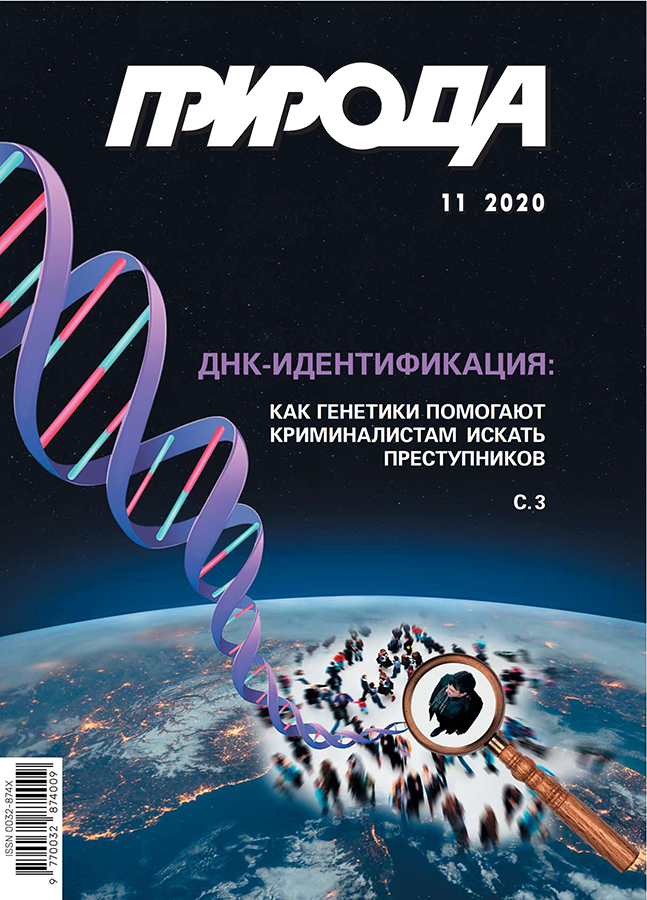Human Microbiome: Sequencing Data from Open Sources and Their Using in Independent Research
- Authors: Nikitin M.S1,2, Zakharevich N.V1, Kovtun A.S1, Artamonova I.I1,3
-
Affiliations:
- Vavilov Institute of General Genetics, RAS
- Moscow Institute of Physics and Technologies
- Kharkevich Institute for Information Transmission Problems, RAS
- Issue: No 11 (2020)
- Pages: 15-21
- Section: Articles
- URL: https://journals.eco-vector.com/0032-874X/article/view/631085
- DOI: https://doi.org/10.7868/S0032874X20110022
- ID: 631085
Cite item
Abstract
Keywords
About the authors
M. S Nikitin
Vavilov Institute of General Genetics, RAS; Moscow Institute of Physics and Technologies
Email: mikhail.nikitin@phystech.edu
Moscow, Russia; Dolgoprudny, Moscow Oblast, Russia
N. V Zakharevich
Vavilov Institute of General Genetics, RAS
Email: zakharevich@yandex.ru
Moscow, Russia
A. S Kovtun
Vavilov Institute of General Genetics, RAS
Email: kovtunas25@gmail.com
Moscow, Russia
I. I Artamonova
Vavilov Institute of General Genetics, RAS; Kharkevich Institute for Information Transmission Problems, RAS
Email: irenart@gmail.com
Moscow, Russia; Moscow, Russia
References
- Daniel R. The metagenomics of soil. Nat. Rev. Microbiol. 2005; 3(6): 470–478. doi: 10.1038/nrmicro1160.
- Sunagawa S., Coelho L.P., Chaffron S. et al. Structure and function of the global ocean microbiome. Science. 2015; 348(6237): 1261359. doi: 10.1126/science.1261359.
- Baquero F., Nombela C. The microbiome as a human organ. CMI. 2012; 18: 2–4. doi: 10.1111/j.1469-0691.2012.03916.x.
- Gill S.R., Pop M., Deboy R. et al. Metagenomic analysis of the human distal gut microbiome. Science. 2006; 312(5778): 1355–1359. doi: 10.1126/science.1124234.
- Turnbaugh P.J., Ley R.E., Hamady M. et al. The human microbiome project. Nature. 2007; 449(7164): 804–810. doi: 10.1038/nature06244.
- Lozupone C.A., Stombaugh J.I., Gordon J.I. et al. Diversity, stability and resilience of the human gut microbiota Nature. 2012; 489(7415): 220–230. doi: 10.1038/nature11550.
- Dinan T.G., Cryan J.F. Regulation of the stress response by the gut microbiota: implications for psychoneuroendocrinology. Psychoneuroendocrinology. 2012; 37(9): 1369–1378. doi: 10.1016/j.psyneuen.2012.03.007
- Mulle J.G., Sharp W.G., Cubells J.F. The gut microbiome: a new frontier in autism research. Curr. Psychiatry Rep. 2013; 15(2): 337. doi: 10.1007/s11920-012-0337-0.
- Averina O.V., Kovtun A.S., Polyakova S.I. et al. The bacterial neurometabolic signature of the gut microbiota of young children with autism spectrum disorders. J. Med. Microbiol. 2020; 69(4): 558–571. doi: 10.1099/jmm.0.001178.
- Vogt N.M., Kerby R.L., Dill-McFarland K.A. et al. Gut microbiome alterations in Alzheimer’s disease. Sci. Rep. 2017; 7(1): 13537. doi: 10.1038/s41598-017-13601-y.
- Scheperjans F., Aho V., Pereira P.A. et al. Gut microbiota are related to Parkinson’s disease and clinical phenotype. Mov Disord. 2015; 30(3): 350–358. doi: 10.1002/mds.26069.
- Andrews S. et al. FastQC: a quality control tool for high throughput sequence data. 2010. Available at: www.bioinformatics.babraham.ac.uk/projects/fastqc.
- Bolger A. M., Lohse M., Usadel B. Trimmomatic: a flexible trimmer for Illumina sequence data. Bioinformatics. 2014; 30(15): 2114–2120. doi: 10.1093/bioinformatics/btu170.
- Langmead B., Trapnell C., Pop M. et al. Ultrafast and memory-efficient alignment of short DNA sequences to the human genome. Genome biol. 2009; 10(3): R25. doi: 10.1186/gb-2009-10-3-r25
- Nurk S., Meleshko D., Korobeynikov A., Pevzner P.A. metaSPAdes: a new versatile metagenomic assembler. Genome Res. 2017; 27(5): 824–834. doi: 10.1101/gr.213959.116.
- Glümer C., Jшrgensen T., Borch-Johnsen K. Prevalences of diabetes and impaired glucose regulation in a Danish population: the Inter99 study. Diabetes care. 2003; 26(8): 2335–2340. doi: 10.2337/diacare.26.8.2335.
- Qin J., Li R., Raes J. et al. A human gut microbial gene catalogue established by metagenomic sequencing. Nature. 2010; 464(7285): 59–65. doi: 10.1038/nature08821.
- Le Chatelier E., Nielsen T., Qin J. et al. Richness of human gut microbiome correlates with metabolic markers. Nature. 2013; 500(7464): 541–546. doi: 10.1038/nature12506.
- Nishijima S., Suda W., Oshima K. et al. The gut microbiome of healthy Japanese and its microbial and functional uniqueness. DNA Research. 2016; 23(2): 125–133. doi: 10.1093/dnares/dsw002.
- Tyakht A.V., Kostryukova E., Popenko A. et al. Human gut microbiota community structures in urban and rural populations in Russia. Nat. commun. 2013; 4: 2469. doi: 10.1038/ncomms3469.
- Qin J., Li Y., Cai Z. et al. A metagenome-wide association study of gut microbiota in type 2 diabetes. Nature. 2012; 490(7418): 55–60. doi: 10.1038/nature11450.
- Karlsson F.H., Nookaew I., Nielsen J. Metagenomic data utilization and analysis (MEDUSA) and construction of a global gut microbial gene catalogue. PLoS Comput Biol. 2014; 10(7): e1003706. doi: 10.1371/journal.pcbi.1003706.
- Kelley D.R., Schatz M.C., Salzberg S.L. Quake: quality-aware detection and correction of sequencing errors. Genome biol. 2010; 11(11): R116. doi: 10.1186/gb-2010-11-11-r116.
- Nikolenko S.I., Korobeynikov A.I., Alekseyev M.A. BayesHammer: Bayesian clustering for error correction in single-cell sequencing. BMC genomics. 2013; 14(Suppl 1): S7. doi: 10.1186/1471-2164-14-S1-S7.
- Benson D.A. Cavanaugh M., Clark K. et al. GenBank. Nucleic Acids Res. 2013; 41(Database issue): D36–D42. doi: 10.1093/nar/gks1195.
- Altschul S.F., Madden T.L., Schäffer A.A. et al. Gapped BLAST and PSI-BLAST: a new generation of protein database search programs. Nucleic Acids Res. 1997; 25(17): 3389–3402. doi: 10.1093/nar/25.17.3389.
Supplementary files









